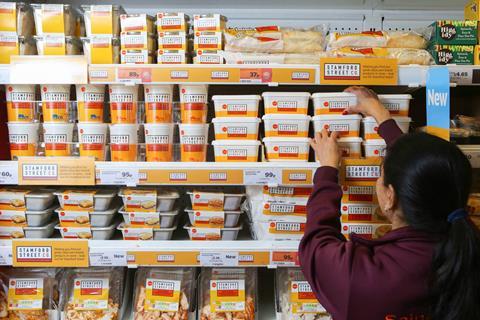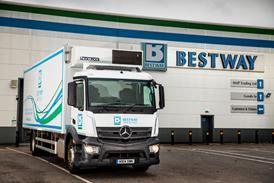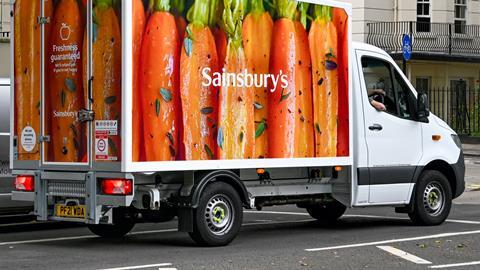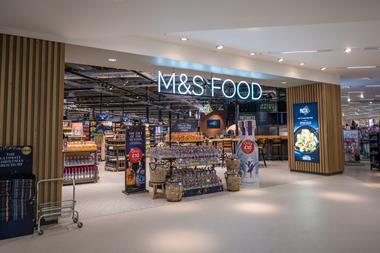Sainsbury’s is now charging for forecast data it previously provided for free. Suppliers say it’s a cash grab, but it could become the new normal
Sainsbury’s move to charge for store-level forecast data has gone down like the proverbial lead balloon with suppliers.
As the supermarket shifts to a new supplier platform – SupplyHub by Circana – it has locked certain data previously provided free behind paid-for tiers. And the sums involved are not small: the largest suppliers are expected to pay up to £400,000 for info that, as one household brand told The Grocer, “we use to help Sainsbury’s increase sales”.
Suppliers have baulked at the move. Many are refusing to pay. “If they insist, then we will just do without the data,” the household brand said. The feeling is widespread, The Grocer understands, while Sainsbury’s has denied the impasse is behind its decision to extend the life of its legacy data platform Horizon.
Richard Harrow, partner at own-label consultancy IPLC thinks “this might be Sainsbury’s fulfilment fee moment,” referring to Tesco’s hugely unpopular demand last year that suppliers pay extra to supply its online and wholesale channels.
So is Sainsbury’s move a reasonable reflection of the value of the data or a cynical cash-grab as some have claimed? And how might the supermarket/supplier relationship be impacted?
Read more:
-
The key questions to be answered in the Tesco fulfilment fee fiasco
-
Suppliers refusing to pay Sainsbury’s new ‘huge’ data fees
Sainsbury’s has not responded to the fee furore specifically, but told The Grocer the new platform was “created in consultation with suppliers and sign-ups have been high”.
And it’s understandable Sainsbury’s is taking this approach, believes SG Retail director and former Dunnhumby MD Steve Gray.
“Data generation comes as a consequence of huge investments in systems so it’s not as if it’s a free resource,” he says. “Data is a key asset that is highly valuable and highly monetisable and so should be sold at its commercial value.”
Suppliers are already “spending fortunes on market research and media, mostly wastefully” Gray adds, pointedly. Retailer data, by comparison, is “of huge value to the supplier”.
“It makes sense for the retailer to sell this data and it makes sense for the supplier to buy it,” Gray adds.
It also makes sense that Sainsbury’s is upping its game on forecast data: the Horizon data was available weekly versus rivals’ daily updates.
On the other hand, the refusal of suppliers to stump up speaks to the mutuality of the data, says Guy Cuthbert, CEO and founder of Atheon Analytics. Most suppliers are comfortable shelling out for data on their competitors or deeper analysis. However, the actual dataset being charged for – standard forecast data that the other big four grocers share for free – is the “essential fuel” for supermarkets and suppliers to ensure high availability and minimal waste, he says.
“Every retailer has an interest in collaborating with suppliers to the extent it can help both parties to match supply and demand.” So the move adds “potentially a huge amount of friction into the machinery”.

Amazon playbook
“It’s a page taken directly from Amazon’s playbook” says vendor advisor Martin Heubel. “Monetising shopper and operational data is one of the most straightforward ways to improve a retailer’s margins.” Amazon has done so “for the last decade”.
But Cuthbert argues sharing data should ultimately be “based on the premise that retailers and their suppliers share a mutual interest in meeting the expectations of shoppers”.
It is possible Sainsbury’s overlooked that point as, giddy from the retail media spending boom, it sought to maximise revenues from high-margin data-led services wherever it can.
That’s certainly the view of Ged Futter, CEO of The Retail Mind. “It’s being rolled out by the Nectar team but clearly they have no idea how it’s used. Nectar will say it’s not bothered, but it will have a big impact on their commercial teams. It will be interesting to see how those discussions go once the ramifications are clear”
Cuthbert agrees. “Many retailers start with an assumption that ‘monetising data’ means selling that data for a fee, but instead should consider the total value of the data to their value chain.”
Read more:
-
GCA postpones supplier survey due to general election
-
Sainsbury’s boosts AI capabilities with new Microsoft partnership
Many brands will now be busy working out the return on investment in buying access to the data. Or figuring out if they can do without – something Aldi and Lidl suppliers are used to.
“Charging suppliers for data they used to get for free is a bold move,” says Helen Murphy, CEO and co-founder of ingredient marketplace Opply. “Access to this data means better costs, more reliable supply and better NPD performance for both suppliers and Sainsbury’s, so if suppliers can’t afford it, it will surely impact on Sainsbury’s as well.
“Retailers already run on smaller margins and often charge high promotional fees for prime shelf space and displays, so adding another layer of cost for suppliers is a big ask. They’ll need to show strong value-add to make it worthwhile and not just a cash-grab,” she adds.

Pieces of silver: how Sainsbury’s new subscription service works
The cost of Sainsbury’s new ‘subscription’ service is based on the size of the business as well as the percentage of own-label sales. There are three standard tiers:
- Free-to-air: a universal service available to all suppliers, this tier includes five ‘viewer’ IDs, replacing existing operational data systems. Users “continue to receive item-level sales performance and depot-level stock KPIs”.
- Bronze: instead of ‘viewer’ IDs this package comes with five ‘author’ IDs. It is “an enhanced offering with increased data, analytics and technology to target efficiency and growth”. It promises to “drive ROI at the lowest level of granularity, including Nectar Card sales and online sales channels”.
- Silver: this tier comes with 10 ‘author’ IDs, and offers “the most complete analytics. The silver programme will allow supplier partners to pinpoint opportunities for the most advanced decision-making, enabled by store-level forecasts for demand and supply chain plus more.”
The new norm?
Could Sainsbury’s stance become the new norm in grocery? “We have been advising another major supermarket on data monetisation strategies,” says Gray, “so this is going to become a highly relevant topic.”
The prospect gives some in the sector the shivers. “Imagine if all retailers, big and small, followed Sainsbury’s example,” Murphy says. “Impact-wise, it’s simply not feasible for anyone in the supply chain ecosystem. Cost-wise, for big brands, it would likely become a headache on the JBP to negotiate. For smaller brands it could become a stranglehold.”
It probably won’t come to that. One industry insider noted the move could “spectacularly backfire” on Sainsbury’s if its rivals stick with the current arrangement. “A supermarket that proactively assures suppliers they’ll never charge for this data would quickly become the preferred retailer,” they say.
Read more:
-
Beyond the label: Unveiling transparency in the supply chain
-
Chicken suppliers face £80m losses over FSA wishbone meat rule change
From a supplier’s point of view, adds Cuthbert, when “there’s suddenly some TikTok trend that’s driving demand for product… it’s easiest to allocate it to retailers who are sharing a lot of information and you can see what’s happening – versus if you’ve got a sort of black hole and you’re working blind”.
For Harrow, Sainsbury’s new approach seems a little off and “not in keeping with their stated aim of building long-lasting relationships with suppliers”.
Cuthbert agrees. Sainsbury’s has “done a fantastic job” in the last few years “working collaboratively with suppliers. So it would be surprising if they maintained this stance. It’s absolutely right they choose to charge for the value-added stuff but I suspect they’ll review what constitutes business as usual and efficient trading [data] and we’ll see some redrawing of the lines.
“But I don’t know if that’s imminent, or if it will take a lot more pushback from suppliers before things change.”

























No comments yet